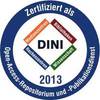German Title: Anwendungen von räumlicher Transkriptomik zur Diagnose von Gliomen
PDF, English
 Restricted access: Repository staff only until 8 May 2026. Restricted access: Repository staff only until 8 May 2026.
Login+Download (16MB) | Terms of use |
|
PDF, English (Corrigendum)
 Restricted access: Repository staff only until 8 May 2026. Restricted access: Repository staff only until 8 May 2026.
Login+Download (270kB) | Terms of use |
Abstract
Brain tumours are among the most aggressive cancer types. Due to the vast amount of different brain tu-mour entities, the correct identification of the tumour type is pivotal for assigning affected patients to a suitable treatment strategy. Among the different brain tumours, the glioma subtypes can be particularly challenging to diagnose, because of their infiltrative growth. The lack of tumour specific markers for glio-blastoma (GB), the most aggressive glioma also adds to the challenge of diagnosing gliomas and makes it difficult to determine the tumour content in infiltration zones and distinguish between infiltration zones and reactive nervous tissue. In addition to the infiltrative growth the diagnosis of gliomas can be further im-paired if only miniscule tissue fragments of the tumour are available, or too little DNA was isolated for a molecular diagnostic workup. However, newly developed technologies like spatial transcriptomics might be able to overcome the previously mentioned issues. To test this hypothesis, I applied sequencing-based spa-tial transcriptomics on 43 glioma samples and imaging-based spatial transcriptomics on 17 high-grade gli-oma samples. Single-nuclei data was also generated of these 17 samples to aid in the analysis. The spatial transcriptomics data was benchmarked against the results of the current diagnostic techniques focusing on identification of copy number variations (CNV), immunohistochemistry (IHC) stains and identification of molecular alterations. The CNVs inferred from the spatial transcriptomics data matched the ones generat-ed by the Illumina EPIC array. Using CNVs inferred from the spatial transcriptomics data I could even identi-fy sub clones, which were not detectable by the EPIC array. Furthermore, the inferred IHC stains for Ki67, GFAP and NeuN matched the real IHC stains. Using the spatial transcriptomics data, I was also able to iden-tify molecular alterations on a single gene level such as EGFR amplifications or mutations. Moreover, single infiltrating tumour cells of GB could be robustly identified using imaging-based spatial transcriptomics data. Leveraging the combination of single cell and spatial transcriptomics methods I investigated the processes in the perinecrotic regions and showed a spatially resolved image of the VEGFA signalling and response in GB. In conclusion, I reproduced the results of the majority of the current diagnostic workflow using spatial transcriptomics and minuscule tissue fragments of 5 µm thickness and a 1 mm diameter. Therefore, spatial transcriptomics proved to be a valuable addition to the diagnostic workflow of gliomas.
Translation of abstract (German)
Gehirntumore zählen zu den aggressivsten Tumortypen. Aufgrund der großen Anzahl an unterschiedlichen Gehirntumoren, ist die richtige Diagnostizierung von höchster Wichtigkeit für die Auswahl der korrekten Behandlungsmethode. Von allen Gehirntumoren stellen Gliome angesichts ihres infiltrativen Wachstums eine besondere Herausforderung dar. Das infiltrative Wachstum stellt vor allem bei Glioblastomen (GB), die aggressivste Form der Gliome, ein Problem dar, da es für diese keine spezifischen Marker gibt, um Tumor-zellen von gesunden Zellen zu unterscheiden. Außerdem kann die korrekte Diagnose durch winzige Tumor-fragmente oder einer zu geringen DNA-Konzentration für eine molekulare Untersuchung weiter beeinträch-tigt werden. Neu entwickelte Technologien, wie räumliche Transkriptomik könnten jedoch dabei helfen, diese Probleme zu bewältigen. Aus diesem Grund habe ich sequenzierungsbasierte räumliche Transkripto-mik auf 43 Gliomen und bildbasierte räumliche Transkriptomik auf 17 hochgradigen Gliomen angewandt. Von diesen 17 Gliomen habe ich zur Unterstützung der Analysen zusätzlich Transkriptomik Daten von einzel-nen Zellkernen generiert. Die generierten Daten wurden dann mit den Ergebnissen der herkömmlichen di-agnostischen Methoden mit einem Fokus auf die Identifizierung von Kopiezahlveränderungen (CNVs), Im-munohistochemie Färbungen und die Identifizierung von molekularen Veränderungen verglichen. Die Be-rechnung von CNVs auf der Basis der sequenzierten räumlichen Transkriptomik Daten zeigte eine hohe Übereinstimmung mit den CNVs des Illumina EPIC Arrays. Wobei sogar Klone, die mit den EPIC Array Daten von Illumina nicht identifiziert wurden, detektiert werden konnten. Außerdem konnten die Färbungen von gängigen Antikörpern (Ki67, GFAP, NeuN, etc.) vorhergesagt werden. Sogar die Identifikation molekulare Veränderungen wie die Amplifikation von EGFR oder Mutationen bestimmter Gene war möglich. Alle ge-nannten Analysen konnten mit minimalistischen Gewebefragmenten, die 5 µm dick und einen Durchmesser von 1 mm hatten, durchgeführt werden. Einzelne infiltrierende GB Tumorzellen konnten mithilfe der bildba-sierten räumliche Transkriptomik Daten identifiziert werden. Durch die Kombination der verschiedenen Da-tensätze konnte ich außerdem Erkenntnisse über perinekrotische Regionen in GB und eine räumliche Auflö-sung des VEGFA Signalwegs erlangen. Die in der Doktorarbeit gewonnen Erkenntnisse zeigen die Vorteile, die räumliche Transkriptomik für die Diagnose von Gehirntumoren hat.
| Document type: | Dissertation |
|---|---|
| Supervisor: | Höfer, Prof. Dr. Thomas |
| Place of Publication: | Heidelberg |
| Date of thesis defense: | 8 May 2025 |
| Date Deposited: | 26 Jun 2025 12:18 |
| Date: | 2026 |
| Faculties / Institutes: | The Faculty of Bio Sciences > Dean's Office of the Faculty of Bio Sciences |
| DDC-classification: | 570 Life sciences |
| Controlled Keywords: | Glioma, RNS, Diagnose |
| Uncontrolled Keywords: | Räumliche Transkriptomik |









